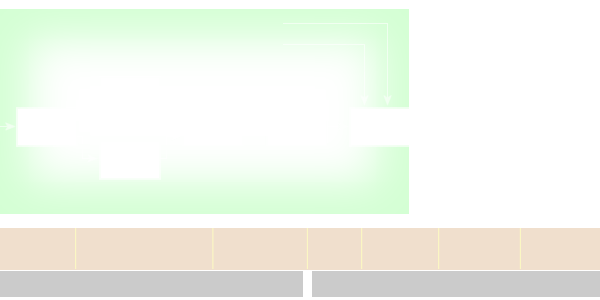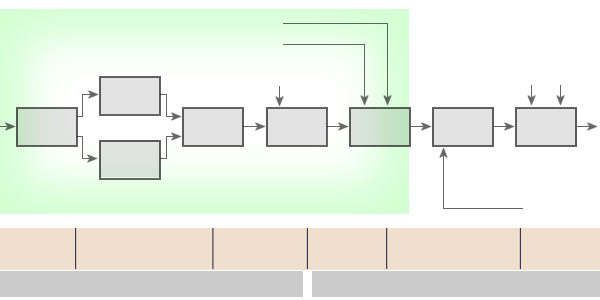Time Stamp

Detector
I-channel
Q-channel
Detector
Extractor
Processor
Combiner
SSR and PSR
Sources
frequency
video
video
Figure 1: Necessity of a time-stamp
Time Stamp
Until the radar data processing can be assumed a real-time processing. Minor delays ranging from a few microseconds are equal for all targets, so they can be calculated out in the estimation of the targets range. Even the delays during the Pulse-Pair Processing (one or several pulse periods) for all echo signals are from the same size and can also be calculated. These delays of up to several milliseconds have no effect on the calculation of the associated bearing angle.

Detector
I-channel
Q-channel
Detector
Extractor
Processor
Combiner
SSR and PSR
Sources
frequency
video
video
Figure 1: Necessity of a time-stamp
But, at least after the plot extractor this time reference is lost. Some plots can be processed immediately and other plots have to go through several filters, without the knowledge how long was this delay. Plot data is no longer real time information and is subject to un-quantified delays in subsequent data processing. E.g into the plot combiner may be processed the radar data from different primary radars. The delays between data from one source to the data from the other source can take up to one complete revolution of the antenna: thus it lies e.g. in the range of 5 to 15 seconds. During this time, a fast-flying aircraft can travel a long distance so that this combination of data without a time reference is impossible.
So it is essential that the plot has an associated time stamp, otherwise the accuracy of the positional declaration will have no value in subsequent plot correlation and tracking systems.
Time information is normally added by the hit processor or plot extractor or plot processor. Modern radar data formats make full provision for the time to be incorporated in the plot message. Normally an accurate time source is provided at radar station and this provides a master source for both primary and secondary radar systems. Typically, the time reference can be an atomic clock or a GPS based time reference.
